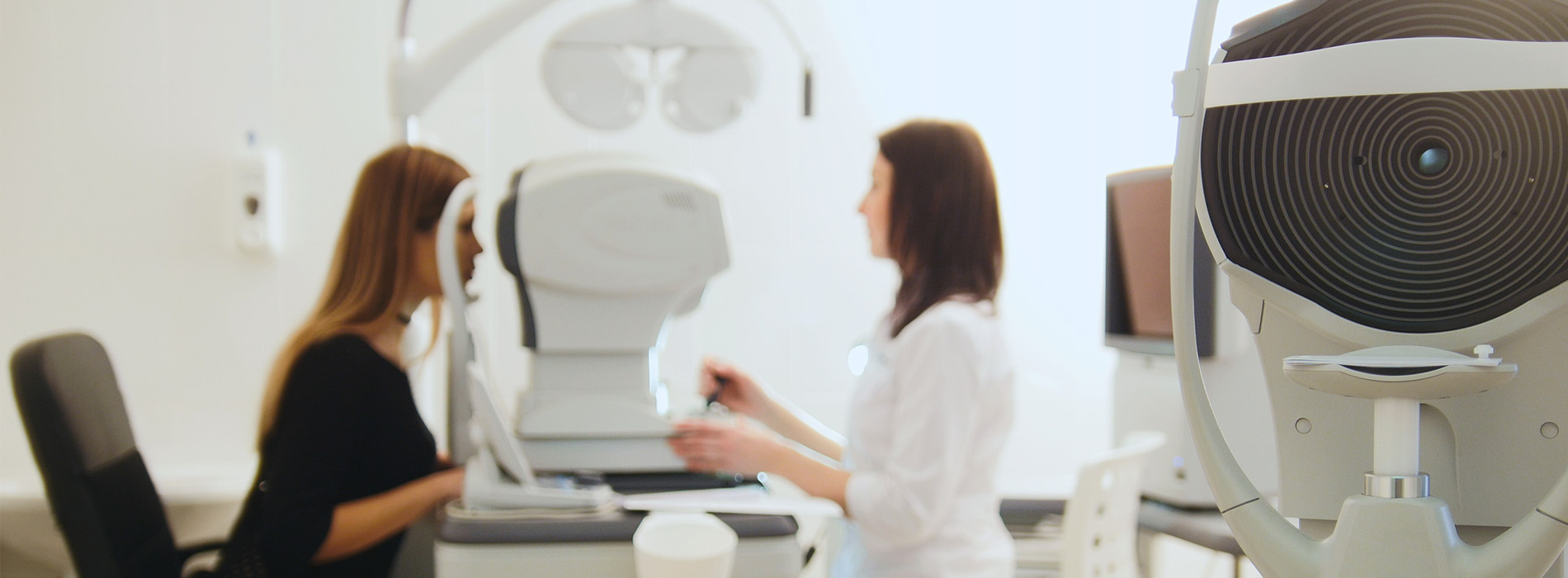Call Us Today!
(516) 561-3937

Fluorescein and indocyanine green (ICG) angiography are diagnostic tests which use special cameras to photograph the structures in the back of the eye. These tests are very useful for finding leakage or damage to the blood vessels which nourish the retina (light-sensitive tissue). In both tests, a colored dye is injected into a vein in the arm of the patient. The dye travels through the circulatory system and reaches the vessels in the retina and those of a deeper tissue layer called the choroid (see Fig. 1 below). Neither test involves the use of X-rays or harmful forms of radiation.
Fluorescein is a yellow dye which glows in visible light. Indocyanine is a green dye which fluoresces with invisible infrared light; it requires a special digital camera sensitive to these light rays.
Both tests can help retina specialists diagnose and evaluate specific eye diseases. Fluorescein dye is best for studying the retinal circulation (below) while indocyanine green is often better for studying the deeper choroidal blood vessel layer (below). Certain eye disorders, such as diabetic retinopathy and retinal vascular occlusive disease affect primarily the retinal circulation and are usually imaged with fluorescein dye. In other disorders, such as age-related macular degeneration, where leakage is from the deeper choroidal vessels, both tests may be useful. Indocyanine green angiography is especially helpful when there is leakage of blood, which may make interpretation of fluorescein studies difficult.
When abnormal vessels or leakage is identified with an angiogram, laser treatment or pharmacological therapies may be indicated to prevent vision loss. The tests can also be useful for following the course of disease or response to treatment.
Fluorescein and ICG angiography are universally employed throughout the world as diagnostic tests. The doctors of Vitreous-Retina-Macula consultants contributed extensively to the development and understanding of these techniques. They have published numerous peer–reviewed papers on the subject, a major textbook, and a CD–ROM.
Both fluorescein angiography and indocyanine green angiography are considered very safe and serious side-effects from these tests are uncommon. However, there is the possibility that a patient may have a reaction to the dyes. While fluorescein contains no iodine and is safe in patients known to be allergic, indocyanine green is currently formulated with iodine and should not be used in these individuals. Some people may experience slight nausea after dye injection that usually passes quickly. Patients who are allergic to the dye can develop itching and a skin rash. These symptoms generally respond quickly to oral medications such as anti–histamines or steroids. Very rarely, a sudden life-threatening allergic reaction called anaphylaxis can occur. This condition requires medical treatment. There is also a possibility of an infiltrate of the dye into the skin at the injection site; this would cause some discomfort or discoloring of the skin for several days. Fluorescein dye will also turn a patient’s urine orange and may slightly discolor the skin as well for a brief period. For special patient populations there may be individual risks of these procedures which your physician will specify for you.
Optical Coherence Tomography (OCT) is a diagnostic test that allows for the imaging and measurement of retinal thickness. OCT is very useful in detecting retinal swelling or fluid accumulation secondary to a variety of retinal conditions. It provides very valuable information and is also useful for following the response to a treatment. OCT testing has become a standard of care for the assessment and treatment of most retinal conditions. OCT uses rays of light to measure retinal thickness and can be performed in a few minutes. No radiation or x-rays are used in this test.
Ultrasound is a test that uses sound waves to assess ocular and retinal conditions. If your doctor cannot view the retina because of some opacity that blocks the view, they may use an ultrasound to determine the general status of the retina. Ultrasound is commonly used to assess the retina in patients with a dense cataract or vitreous hemorrhage. Ultrasound is simple to perform, painless, and does not involve any radiation.
